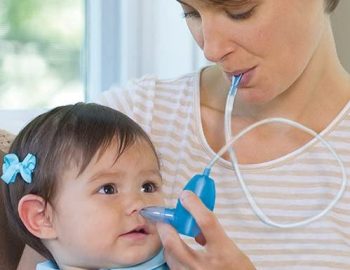What to look for and How to Use babies Nasal Aspirator
If you really need to minimize infection spreading to the ears and relieve your child’s suffering, doctors recommend nasal mucus be removed as soon as possible. A nasal passages blockage causes nasal congestion in newborns and infants, usually caused by a build-up of mucus or swollen membranes lining the nose caused by swollen blood vessels. Nasal blockage, sinus obstruction, blocked nasal, nosebleeds, stuffy nose, or clogged up nose describe nasal blockage. Nasal congestion can be anything from a little nuisance to a potentially fatal illness.
The only way a newborn can breathe is through their nose (newborns are “obligate nose breathers”). Breastfeeding can be hampered by infant congestion, which can lead to life-threatening respiratory distress. Mucus that stays in the nose for a long time can lead to sinus infections, spreading towards the ears. Click this link https://snottynoses.com.au/ and find more about babies Nasal aspirator devices.
There are three makes of baby nasal aspirators for removing nasal mucus:
- A bulb syringe is a device that is used to inject light into a bulb.
- Self-suctioning and
- battery-powered nasal aspirator

The last type is often regarded as the most successful since the operator can effectively generate higher and more consistent suction by using his or her suction. In addition, mucus is caught in a receptacle or a filter with self-suctioning type aspirators, so the operator (usually a parent) is not exposed to germs and mucus. Traditional bulb-type nasal aspirators are often sent home with new parents, but they aren’t always the greatest equipment for the job.
The bulb syringe aspirator’s main disadvantage is that it can only produce limited suction due to its small size. In addition, it necessitates frequently inserting the bulb into the child’s nostril to eliminate mucus. It is tough with a toddler who will almost certainly wiggle, potentially damaging the sensitive nasal membranes. We’ve put all of the battery-operated nose aspirators on the market to the test and found that they’re ineffective because they don’t generate enough suction.
Using a self-suctioning aspirator
Viruses and bacteria are water-borne, meaning they could only transmit if they are carried in water droplets or mucus. Self-suctioning aspirators that are properly built are specifically designed to prevent droplets from passing through the suction tube. Filters are also commonly used in self-suctioning aspirators to capture liquid droplets.
Worries of creating too much damage and suction on the infant
Response: Consider the comparatively high pressures produced by sneezing, which may reach speeds of up to 100 miles every hour. In other terms, the human body is built to resist and even generate substantially higher sinus pressure than that produced by nasal suctioning. Lastly, do forget to gather more information about babies’ nasal aspirators on this link https://snottynoses.com.au/.

